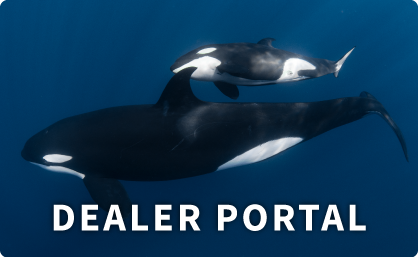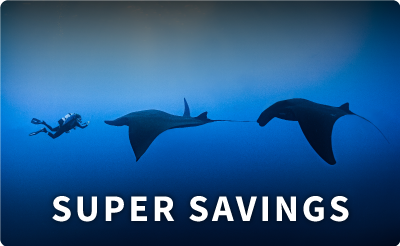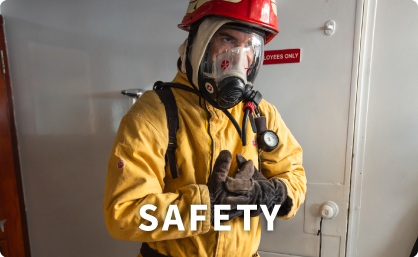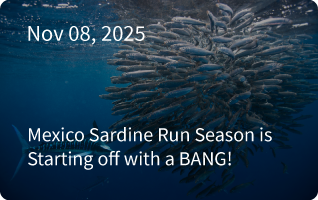JJ, the baby gray whale who was rescued and grew up at SeaWorld. Her story is a heartwarming miracle and a reason to be joyful at the end of this troubling and difficult year.
This is the time of year when gray whales make their annual migration home to the lagoons, bays, harbours, and basically every tiny bit of protected water around Baja California, Mexico. The males cruise in and out of each hangout looking for females. Females do the same thing, except for those who are pregnant and looking for calm, shallow, protected waters. Calves are typically born from the beginning of January in the lagoons, a safe nursery for gray whales. Sadly, some mothers give birth along the way, creating a very difficult survival situation for those calves out in the open ocean.
Rescue Mission: Saving a Beached Baby Whale
In January 1997, a week-old gray whale calf was discovered battered in the beach surf at Marina Del Rey in California. She was weak, dehydrated, infested with whale lice, and with no momma in sight. She was the cetacean equivalent of a newborn baby, at 14 ft long and weighing just 1670 lbs. Rescuers spring into action, with SeaWorld offering the use of their staff and facilities. Astonishingly, the baby whale responded to round-the-clock care. This included finding a substitute for momma’s milk: water, dry milk, whipping cream, and ground herring. Yummy!!! The whale was soon named JJ, after Judi Jones, who had cared for many other rescued marine animals.
JJ’s Rehabilitation
JJ started growing, and kept on growing! After 1 month, she gained 900 lbs and grew 18 inches. She was soon moved to one of the orca tanks at SeaWorld. By 4 months, she was eating solid food, including squid and small fish. By 8 months old, she was devouring 850 lbs of food a day!
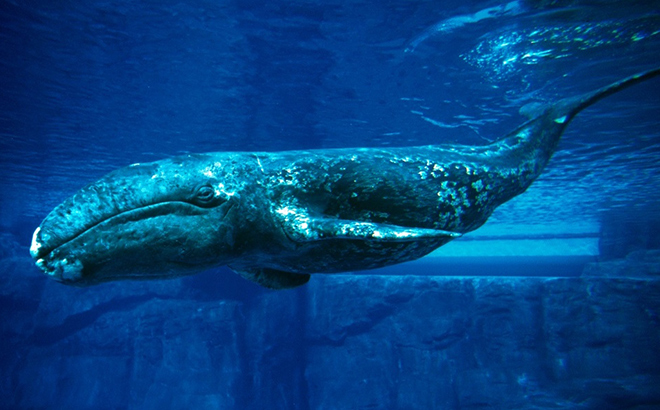
Knowing that it would be impossible for a fully grown gray whale to survive in an aquarium tank, great efforts were made to acclimate JJ to the wild. With the intention of releasing her the following spring to join the northward migration of gray whales in April and May. Divers started leaving her food in different places around the aquarium. To everyone’s delight, JJ’s instincts kicked in. She rolled onto her right side, “hoovering” up the food on the bottom, just as gray whales do in the wild. Most gray whales are “right-handed” when it comes to feeding. Her blubber continued to grow thicker.
Gray whales are vocal and communicate with a language all of their own. Caregivers started playing recordings of gray whales in the wild, and JJ started making noises in response. At 1 year old, when JJ weighed 18,000 pls and was 30 feet in length. SeaWorld introduced video camera-equipped California sea lions into her tank to acclimate JJ to the idea of being around other animals. They also captured some fantastic footage at the same time.
Return to the Wild
The timing for her release was critical to her survival. The following spring, JJ was lifted by crane into a specially shaped and foam-padded truck, where her skin was kept wet with water. She was then transferred to a buoy tender coast guard ship for a first-class ride to the waters of San Diego.
Once back in the ocean, JJ took a big breath, dove deep, and disappeared. She was on her own, with researchers in a small boat following her. They observed her moving around and seemingly exploring, behaving like any other gray whale, including spy-hopping behaviour. We like to think she was poking her head out of the water to look for all the people who had cared for her.
Scientists equipped her with satellite transmitters to help them track and monitor her. However, by the end of her second day at sea, she had stripped off all the devices. She was truly back in the wild.
Gray whales typically live for 50 to 60 years. JJ will be 27 years old during our upcoming whale season, and we all hope that she is happy and healthy. Perhaps she will even visit us at San Ignacio Lagoon to birth her own babies one day!
- Captain Mike

